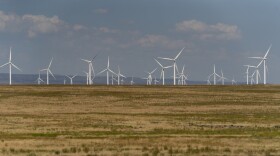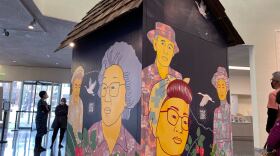-
Washington residents who survived incarceration in Japanese concentration camps in the 1940s are urging elected officials to push back against the Trump Administration's immigration enforcement actions.
-
U.S. Rep. Emily Randall announced the new bill while visiting a memorial for the first Americans of Japanese descent who were exiled and imprisoned by the U.S government during World War II.
-
An art installation at the King County Library System's Bellevue branch shares stories from Japanese Americans who were incarcerated. It's in the form of a farmhouse that features an off-centered roof and no door.
-
The Pike Place Market apologized for canceling an event meant to commemorate the day Japanese Americans were forcibly removed and incarcerated after the bombing at Pearl Harbor.
-
The proposed large-scale wind energy farm in southern Idaho would shrink by nearly half and keep it farther away from the Minidoka National Historic Site, a World War II Japanese American internment camp.
-
Whether you're playing tour guide or exploring your own city, here are eight things you may not know about Pike Place Market.
-
Across the region, Japanese Americans – including survivors of U.S. internment camps – are speaking out about a proposed wind farm, the Lava Ridge Wind Project, in southern Idaho.
-
Commissioned by Meta Open Arts, Japanese American artist Michelle Kumata's latest installation honors the Nikkei farmers of Bellevue who were incarcerated during World War II.
-
Paul Chihara was just 4 years old when he and his family were forced from their Seattle home and sent to an incarceration camp in Idaho. Now 83, Chihara returns to his hometown to debut a piece that commemorates 80 years since Executive Order 9066.
-
Julian Saporiti turned his Ph.D. dissertation into the musical project No-No Boy. He's released a number of songs that explore the untold histories of Asian Americans and immigrants.
Play Live Radio
Next Up:
0:00
0:00
Available On Air Stations








